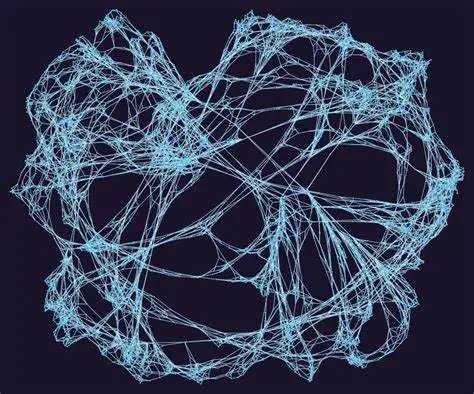|
TRANSLATE THIS ARTICLE
Integral World: Exploring Theories of Everything
An independent forum for a critical discussion of the integral philosophy of Ken Wilber
 Joe Corbett has been living in Shanghai and Beijing since 2001. He has taught at American and Chinese universities using the AQAL model as an analytical tool in Western Literature, Sociology and Anthropology, Environmental Science, and Communications. He has a BA in Philosophy and Religion as well as an MA in Interdisciplinary Social Science, and did his PhD work on modern and postmodern discourses of self-development, all at public universities in San Francisco and Los Angeles, California. He can be reached at [email protected]. Joe Corbett has been living in Shanghai and Beijing since 2001. He has taught at American and Chinese universities using the AQAL model as an analytical tool in Western Literature, Sociology and Anthropology, Environmental Science, and Communications. He has a BA in Philosophy and Religion as well as an MA in Interdisciplinary Social Science, and did his PhD work on modern and postmodern discourses of self-development, all at public universities in San Francisco and Los Angeles, California. He can be reached at [email protected].
SEE MORE ESSAYS WRITTEN BY JOE CORBETT
Wolfram, the AQAL, and Kosmic ComputationJoe Corbett
 Stephen Wolfram has for long been at the forefront of research into a paradigm of physical modeling and complex assembly theory called computational cellular automata which seeks to understand the entire universe as being based on a set of simple principles, rules, and operations that compute and organize the universe into existence. His model is based on a few general ideas of spatial categories that happen to parallel the categories of the AQAL as I have described it in my essays “Schrodinger, the AQAL, and the Kosmic Brain” and “Entropy, the AQAL, and the Kosmic Hologram”. Here's how Chatgpt describes the two main kinds of space in Wolfram's model -- “The ruleial space refers to the space of all possible rules that can be applied in a given computational system, such as cellular automata. This space represents the entire range of possible behaviors and patterns that can emerge from the system based on different rules. On the other hand, the branch-hill space of the Ruliade within Wolfram's model refers to the specific subset of rules within the ruleial space that are most relevant and significant for describing the behavior of a particular system or phenomenon. This subset of rules is typically characterized by their ability to produce complex and interesting patterns or behaviors. In summary, the ruleial space encompasses all possible rules that can be applied in a computational system, while the branch-hill space refers to the subset of rules that are most important for understanding and describing the system's behavior.” And to these two basic kinds of space Wolfram adds the physical space we live in, whereas the Ruliade is the thing that encompasses all of them simultaneously.
In AQAL terms we might say that the Kosmos computes itself into existence through a rapid oscillation between Beauty and the Good from moment to moment, which collapses into Truth within the totality of Justice.
Leaving aside for now the details of how Wolfram sees these spaces generating the phenomena of the universe, which even he admits it isn't all that clear how that occurs in his mathematically generated computer simulations, in my model of the AQAL, ruleial space occupies the ULQ of quantum possibilities and the adjacent possibles of consciousness, life, and all physical manifestation as it makes its way or “collapses” into the right hand quadrants. It represents the future possible forms of the universe not only in thought but in all manifestation. It also represents entropy or pure noise when cut-off from the informational memory of the past, which is the probability of things in their habitual repetition of form in the LLQ. This tendency towards habitual memory and repetition is the branch-hill space of Wolfram's model, the domain of probability as things form and eventually “collapse” into physical manifestation in the URQ. Finally, when things collapse into manifestation they do so as part of the ensemble of things in the LRQ, which is the space in which all possible things emerge and arise that Wolfram calls the Ruliade. In my AQAL model of the wave function, the universe “collapses” or computes itself into existence from moment to moment through a rapid oscillation between the future possible forms (ULQ) and the past probable forms (LLQ) of a quantum system, and in Wolfram's model that is the ruleial and branch-hill spaces respectively, which generates the physical space of the universe we live in operating within the Ruliade. In AQAL terms we might say that the Kosmos computes itself into existence through a rapid oscillation between Beauty and the Good from moment to moment, which collapses into Truth within the totality of Justice, or alternatively, the Kosmos arises as a dialogue between the Mind and the Soul as they are realized in the Body that abides in the dynamic unity of the Spirit from moment to moment.
 This brief introduction to how Wolfram's computational model fits into the AQAL and how it in turn parallels my own conception of how the wave function operates to compute the universe into existence, is obviously not meant to be an exhaustive but only a suggestive examination of how to think about the Kosmos as it speaks itself into existence through its very own computational rules and dynamics of Logos, or Algos. Video of Wolfram on why or how the universe comes into existence.
Why does the universe exist? | Stephen Wolfram and Lex Fridman
|